#West Central Railway
Text
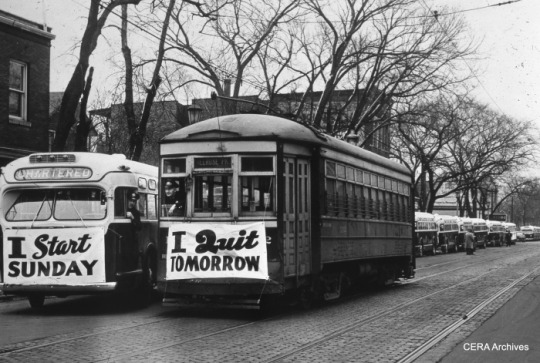
From the Central Electric Railfans' Association, Chicago:
On February 14, 1947, West Towns posed some of their new buses on Lake Street. Two days later, buses replaced streetcars on the Madison St. line.
#Chicago & West Towns Railway#chicago history#chicago streetcars#streetcars#madison street car line#central electric railfans' association#vehicles with signs#real streetcar stuff#real train stuff
23 notes
·
View notes
Text
West Central Railway Recruitment 2024 Apply Online 02 Cultural Quota Vacancies
West Central Railway Cultural Quota Recruitment 2024
The Railway Recruitment Cell (RRC), West Central Railway, is inviting online applications for 02 Cultural Quota posts for the year 2023-24. The closing date for submission of online applications is 7th January 2024.
Vacancy Details:
Name of DisciplineNo of VacancySynthesizer Player (Keyboard Player / Harmonium Player) (Male / Female)01Indian…
View On WordPress
#10th#2024#apply#central#cultural#govt#Jobs#online#pass:#quota#railway#Recruitment#uncategorized#Vacancies#west
0 notes
Text
West Central Railway Recruitment 2023: पश्चिम मध्य रेलवे में केवल 10वीं पास के लिए 3000 से ज्यादा नौकरियां, पढ़े पूरी प्रक्रिया
West Central Railway Recruitment: रेलवे की तैयारी करने वाले युवाओं के लिए है बहुत बड़ी खुशखबरी, पश्चिम मध्य रेलवे, रेलवे विभाग ने नए साल 2024 में कक्षा 10वी पास युवाओं के लिए बड़े पैमाने पर भर्ती अभियान शुरू किया है। और पश्चिम मध्य रेलवे ने ही भर्ती का ये नोटिस जारी किया है.
डब्ल्यूसीआर जबलपुर द्वारा विभिन्न प्रकार के ट्रेड अपरेंटिस पदों के लिए रिक्तियों की अधिसूचना जारी की गई है। अन्य डिग्री…
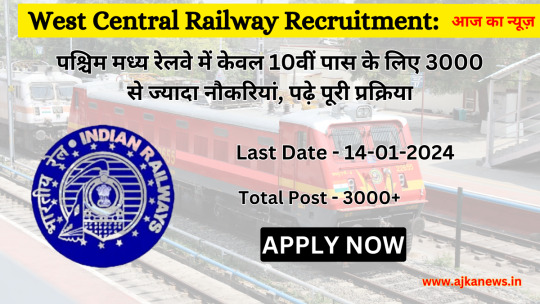
View On WordPress
0 notes
Text
रोज करेंगे योग, तो हमेशा रहेंगे निरोग की सीख दी

View On WordPress
#Kshatrani Ekta Manch#Nida Farheen#Rahat Welfare Society Women and Children Itarsi#Saraswati Shishu Vidya Mandir Itarsi#West Central Railway Institute 12 Bungalow Itarsi
0 notes
Text
Central Railway Recruitment 2023 2422 Apprentice Vacancy
Central Railway Recruitment 2023 2422 Apprentice Vacancy
#jobtamizhan #govtjobs #governmentrecruitment #centralgovtjobs #tnpsc #upsc #ssc
Central Research Institute for Dryland Agriculture Recruitment 2023 Apply 2422 Apprentice Vacancies » Official Notification Released. Central Government Official Release The Notification Interested & Eligible Candidate Please Must Check Full Notification Details, Education Details, Salary Details, Age Relaxation, Vacancies Details, Address Details Next Strat The Apply Process Eligible Candidate…
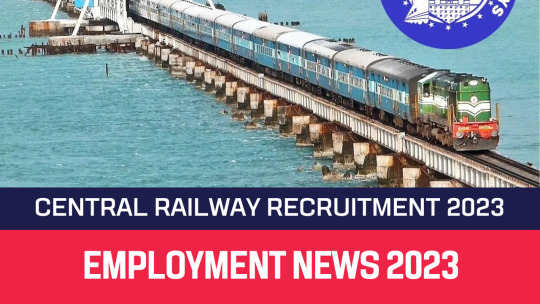
View On WordPress
#central railway apprentice#central railway apprentice 2022#central railway apprentice 2023#central railway apprentice cut off 2022#central railway apprentice form 2022#central railway apprentice online form 2022#central railway apprentice online form 2023#central railway recruitment 2022#Central Railway Recruitment 2023 2422 Apprentice Vacancy#railway apprentice#railway apprentice 2022#railway latest apprentice 2022#rrc central railway apprentice online form 2022#west central railway apprentice 2022
0 notes
Text
உடனே விண்ணப்பிக்கவும் | பத்தாம் வகுப்பு தேர்ச்சி போதும் - இரயில்வே துறையில் வேலை..!
உடனே விண்ணப்பிக்கவும் | பத்தாம் வகுப்பு தேர்ச்சி போதும் - இரயில்வே துறையில் வேலை..!
#Railway #centralgovt #jobrascals #10thpass #facebook @facebook
மேற்கு மத்திய இரயில்வே துறையில் 2521 Technician பணியிடம் நிரப்புவதற்கான அறிவிப்பு வெளியாகியுள்ளன. மத்திய அரசு இந்த அதிகாரப்பூர்வ அறிவிப்பினை வெளியிட்டுள்ளது. மேற்கு மத்திய இரயில்வே துறையின் பணிக்கு விண்ணப்பிக்க ஆர்வமுள்ளவர்கள் 18/11/2022 முதல் 17/12/2022க்குல் ஆன்லைன் மூலமாக விண்ணப்பிக்கவும். இப்பணிக்கு விண்ணப்பிக்கும் நபர்கள் விண்ணப்பிக்கும் முன்பு கீழே கொடுக்கப்பட்டுள்ள பணிக்கான கல்வித் தகுதி…

View On WordPress
#indian railway recruitment 2022#railway apprentice 2022#railway latest apprentice 2022#railway ntpc recruitment 2022#railway recruitment 2022#wcr railway recruitment 2022#west central railway apprentice#west central railway apprentice 2022#west central railway apprentice online form 2022#west central railway apprentice recruitment 2022#west central railway apprentice recruitment 2022 merit list#West Central Railway Recruitment 2022#western railway recruitment 2022
0 notes
Text
After Lokpal's order, CBI books former RVNL CMD in corruption case
After Lokpal’s order, CBI books former RVNL CMD in corruption case
Following his sudden sacking in July this year, the Central Bureau of Investigation had registered a case against the former CMD of Rail Vikas Nigam Limited (RVNL) on the orders of the Lokpal. He is accused of misappropriating around one lakh rupees. 1100 crore government fund to a private company in his favor. Prior to his dismissal, he was managing the government’s prestigious bullet train…
View On WordPress
#bullet train#CBI#central bureau#Chief Minister of West Bengal#CMD#Corruption#Mamata Banerjee#Ministry of Railways#ombudsman#Rail Vikas Nigam Limited#Satish Agnihotri
0 notes
Text
756 स्टेशनों की सुरक्षा के लिए रेलवे ने उठाया यह खास कदम, इनमें 15 पश्चिम मध्य रेलवे के
756 स्टेशनों की सुरक्षा के लिए रेलवे ने उठाया यह खास कदम, इनमें 15 पश्चिम मध्य रेलवे के
Image Source : FILE PHOTO
Indian Railways
Highlights
रेलवे ने 756 रेलवे स्टेशनों पर वीएसएस लगाने की योजना तैयार की
इसमें मध्यप्रदेश के 15 रेलवे स्टेशन भी हैं शामिल
वीडियो फीड की रिकॉर्डिंग 30 दिनों के लिए स्टोर की जा सकती है
Indian Railways: इंडियन रेलवे यात्रियों की सुरक्षा के लिए हमेशा कोशिशों में जुटी रहती है। खासतौर पर सुरक्षा तंत्र को लेकर रेल मैनेजमेंट काफी गंभीर है। यात्रियों की सुरक्षा…
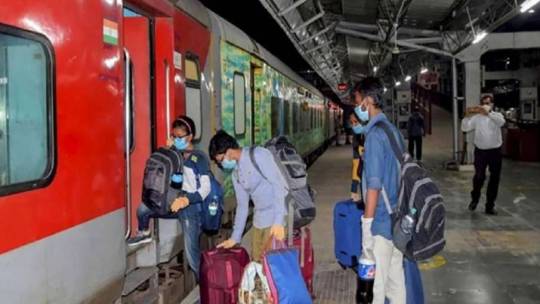
View On WordPress
#Indian Railway News#indian railways#National Hindi News#out of which 15 are of West Central Railway#Railways took this special step for the safety of 756 stations#Surveillance system#video Surveillance system#VSS
0 notes
Text
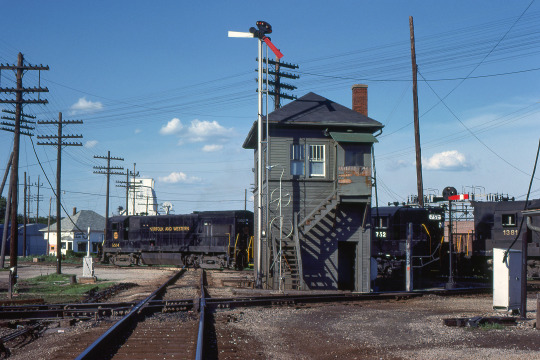
Gibson City, Illinois
This is a triple crossing in the center of Gibson City, Illinois. While two of the three roads at this point are of the Norfolk & Western, formerly it was the Wabash, the Nickel Plate, and the Illinois Central all meeting at this spot.
We’re looking up the Illinois Central (between Clinton and Gilman) while the east/west Nickel Plate is on this side of the tower. The train is northbound on the former Wabash line, between Bement and Chicago, on the other side of the tower.
Note that all of the locomotives have high short hoods, a signature feature for the Norfolk & Western during this time period (along with the Southern Railway).
One image by Richard Koenig; taken May 22nd 1977.
#railroadhistory#railwayhistory#wabashrailroad#nickelplaterailroad#gibsoncityillinois#gibsoncityil#gibsoncity#illinoiscentralrailroad
54 notes
·
View notes
Text

A Westbound Central of Georgia Railway freight train no. 29 passes West Opelika signal in March of 1954. Photo by J. Parker Lamb.
38 notes
·
View notes
Text
Livable Streets in China

In 2019, there were almost one billion passenger-trips on public transit in the US. This is roughly the same number as that of Tianjin, a city in China with only 13 million people. China as a whole has more than this, the USA's total yearly number of passenger-trips, every single day. Evidently, when it comes to transit infrastructure, China's doing something right.
I'll note that I'm only talking about urban transit, here - China's vast high-speed railway network is already well discussed, and fills a space occupied, in the US, by domestic airline flights. When it comes to urban public transport, China is king. China has the longest metro system in the world, in Shanghai, with 400 stations and 800 kilometers of track. China also has the second, third, fourth, fifth, and sixth longest metro systems - in fact, the only metro system in the top ten not in China is the Moscow Metro, built by the USSR - and half the size of Shanghai's.
Still, there's room for improvement! The Central Urban Work Conference convened in 2015, the first since the beginning of opening up, marked a paradigm shift in urban design. China's qualitative change, from a rural to an urban country, is a recent transition, and it takes time for its effects to equalise. Before discussing the most advanced leaders of China's urban drive towards livable streets - which are literally tearing up highways to build parks instead - it might be useful to get a broader view.

The city of Zhuzhou, in Hunan province, is a small, third-tier city of only a million people. Being a third-tier city, its situation is different from the first- and second-tier cities, who developed, and have been strongly introduced to, new urban design paradigms. The city's rapid motorisation impacted the vitality of its urban centre, deterring street-front social interaction and general livability. The city government considered this a large issue, and began moving funds away from highways and road expansions, and towards the renovation of smaller streets. Now, for context, in this scenario of unchecked motorisation, 78% of Zhuzhou's residents still travel by walking, cycling, and taking public transit.
When it came to Zhuzhou's approach to these issues, it was one that comprised of many approaches touted internationally. Streets are thinned, and given chicanes to reduce car speed. Drivers are able to see their speed more clearly on thinner streets, and, psychologically, feel unsafe driving at high speeds. Sharp corners and dog-legs are built onto streets, to physically ensure slower speeds, especially at intersections and crossings. Slip lanes are removed, and islands are added to pedestrian crosswalks. Pedestrian crossings, rather than dipping down into the street, remain level, physically forcing cars to slow down as they make their way up, like a speed bump, and enforcing the perception that the cars are infringing into a pedestrian space.

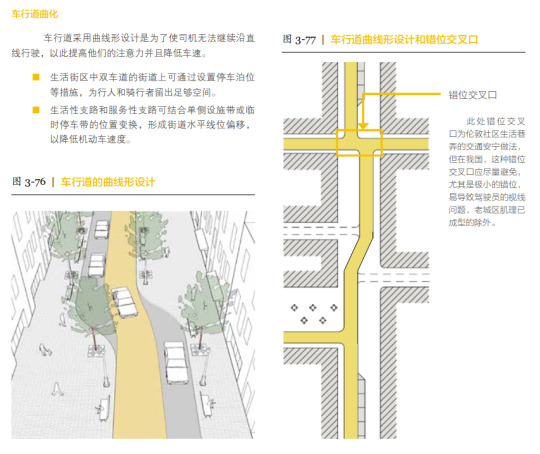
Some approaches were more unique, and integrated building design. Part of the city's design manual focused on the somewhat-common but less discussed feature, of aspect ratio - the vertical height of buildings for a given horizontal space, important for avoiding the depressing, flat expanses of tarmac that make up US sprawl. Another focused on the integration of pedestrian overpasses and underpasses into buildings, and the enforcement of building overhangs and arcades that provide a sheltered space.

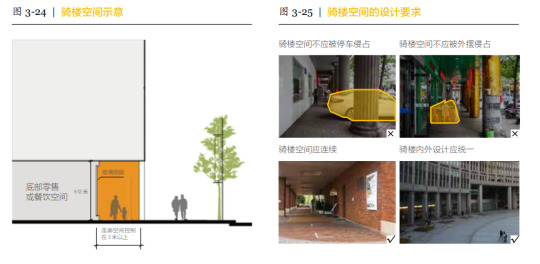
These are the changes put into motion in third-tier cities, meeting and exceeding the beacons of urban design often presented in the west. When it comes to first-tier cities like Shanghai, the award-winning Shanghai Street Design Guidelines are realising advanced, human-centred urban design for greater numbers of people than ever before.
871 notes
·
View notes
Text



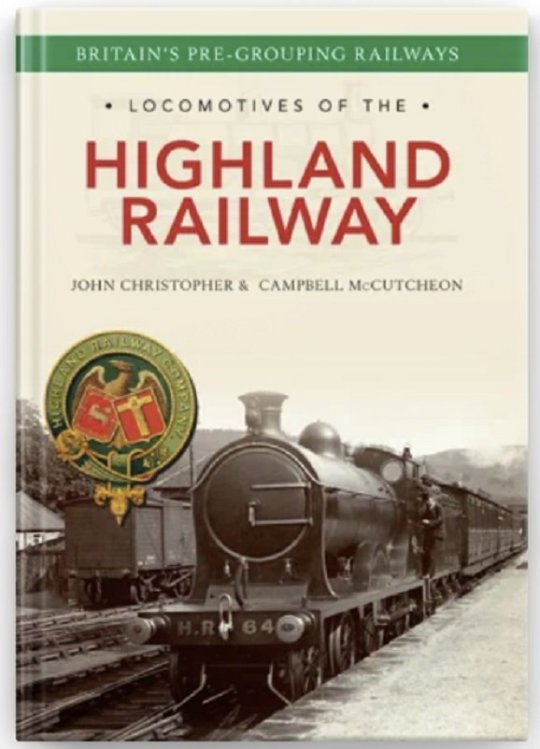

On February 1st 1865 the Highland Railway was formed from the amalgamation of Inverness and Perth Junction and the Inverness and Aberdeen Junction Railways.
Back in the day every region had it’s own local railway company covering the different areas around the country. The Highland Railway ran from Perth in Central Scotland north to Inverness and then on up the east coast to Wick and Thurso. From Dingwall, the railway ran west to Kyle of Lochalsh to serve Skye and the Western Isles. From Inverness, another line ran east to Keith, where it connected with the line to Aberdeen. Several branches were built from this core network to serve nearby towns.
This is a longer post than I normally put together but hope you get an idea of how all these wee companies ran, and ended up becoming the one company, before of course the bigger companies ate them all up. Some of the stations are now gone, but others mentioned, like Kingussie, Nairn, Keith and Dunkeld survive to this day, and I often pass through them on my travels north. It also gives us an insight intothe infamous Beeching cuts in the 60’s which butchered the rail network, if Beeching had his way there would be no railways beyond Inverness!!
Inverness was always the centre of the Highland Railway. It was the company’s headquarters and principle station. All trains led to Inverness.
The original proposals to construct railways to Inverness were made in the mid-1840s. Rival routes were proposed from Perth and Aberdeen . The Perth & Inverness Railway was considered too hilly for the locomotives of the day, but the Great North of Scotland Railway (GNSR) from Aberdeen was authorised. The GNSR struggled to raise capital in the post-railway mania period and eventually started construction as far as Huntly in 1852, opening that line in 1854.
The people of Inverness then stepped in and started building their own line from the Inverness end, initially as far as Nairn, the Inverness & Nairn Railway (I&N) was opened on 6th. November 1855 but by then plans were being made to extend this railway to meet the GNSR. After some discussion, the Inverness & Aberdeen Junction Railway (I&AJ) was promoted to build the line from Nairn to Keith where it met the GNSR extension from Huntly. The I&AJ was completed on 18th. August 1858,when it took over the working of the I&N.
The people of Inverness were never satisfied with the long journey round via Aberdeen , especially as the GNSR’s station was half a mile from that of the line from the south and connections were not always maintained. Thus was born the Inverness and Perth Junction Railway (I&PJR) which ran from Forres via Grantown, Kingussie and Drumochter summit to Dunkeld where it met with end on with the Perth and Dunkeld Railway which had opened in 1856. The I&P was authorised in 1861 and opened just two years later, being worked from the outset by the I&AJR. The two companies amalgamated on 1st. February 1865 to form the Highland Railway.
Meanwhile construction northwards from Inverness had already started, with a line to Dingwall (1862), Invergordon (1863), Bonar Bridge (1864), Golspie (1868), Helmsdale (1871) and Wick and Thurso (1874). Westward from Dingwall, the Dingwall & Skye Railway was opened to Strome Ferry in 1870.
In the 1890s, two additions were made to the main network. The direct line from Aviemore over Slochd to Inverness was completed in 1898, a year after the Skye line was extended to the present terminus at Kyle of Lochalsh. Several branches were opened from these main lines over the next 40 years, taking the final length of the system to some 242 route miles.Tourist traffic has always been a major source of income for the railways in the Highlands . The Highland Railway developed its own hotels at Inverness , Dornoch and Strathpeffer. It offered combined tours in conjunction with the steamer services of David MacBrayne. Each August it had to contend with the annual migration north for the ‘glorious twelfth.’
The railway played a major part in the First World War, when the Grand Fleet was stationed at Scapa Flow in the Orkney Islands . Worn down, like many other railways in the country, it became part of the London , Midland and Scottish Railway in 1923. The LMS continued to develop the lines, introducing dining cars and speeding up services. The Second World War again imposed a considerable strain on the lines.
On the nationalisation of the railways, the Scottish Region of British Railways took over. Soon the development of road transport made a significant impact on the use of the railway. The closure of branch lines, which had started in the 1930s, continued. The Beeching Plan of 1963 envisaged the closure of all lines north of Inverness , but this was not approved because those lines still provided a lifeline in winter. The old route from Aviemore to Forres and a number of intermediate stations on the main lines, were closed. Otherwise the main system remained intact, as it does today. Currently operated by ScotRail, the lines continue to provide a vital link to locals and bring many tourists to the area.
The Highland Railway was well known for its locomotives. Working the steep gradients of the main line, in particular, was always a challenge. Add strong winds and snow and the problems became even worse. The railway introduced the first 4-6-0s to the British Isles, commemorated in the preserved No.103 at the Glasgow Transport Museum . In the 1930s, the LMS Black 5s, locally always called “Hikers”, immediately proved their worth. The isolated nature of the country led British Railways to implement complete dieselisation early in the modernisation plan.
Today class 158 and 170 diesel multiple units work most of the trains, but you can still retire to bed in a sleeper on the line out of London Euston and wake up to the sound of a Class 67 struggling up Drumochter.
39 notes
·
View notes
Photo

On this day, 12 January 1904, a rebellion began by the Herero people in Namibia against oppression by German occupiers of their country. The rebellion had begun in January 1904 in response to rising tensions within the German colony and was initiated by an order from Samuel Maharero, leader of the Herero. In 1884 the German state had declared South-West Africa a German colonial territory. The Germans took land from local African inhabitants and instituted laws and policies that served to oppress the local population. The Herero remained more economically powerful until a plague in 1897 killed up to 90% of their herds, weakening the Herero. German policies became more brutal in response and the Herero people’s freedom and culture became heavily restricted. The rebellion began with the invasion of Okahandja, a city in central Namibia, by mounted Herero, who killed 123 people, mostly Germans, and set buildings alight. The uprising spread across the region with Herero occupying a military station and killing soldiers, besieging another city and ambushing a German military company. Eventually, however, the Herero were overwhelmed by German forces. Many died of starvation and thirst as they fled through the Omaheke desert. 12,000 were forced to surrender and were placed in concentration camps where medical experiments and daily executions occurred. Many people from the camps were enslaved and forced to build railways, docks and buildings throughout the country. 80% of the Herero population of Namibia were wiped out during the revolt. General Lothar von Trotha, who was sent to crush the resistance, ordered that, “Within the German borders every Herero, whether armed or unarmed, with or without cattle will be shot.” A report published in London in 1918 stated that German soldiers had killed unarmed women and children. The war and the extermination order by general Lothar von Trotha, are considered by most historians to be the first genocide of the 20th century. https://www.facebook.com/workingclasshistory/photos/a.296224173896073/2184461488405656/?type=3
183 notes
·
View notes
Text
Random Weirdness on the Railway
I’ve done nearly ten years on the railway now, and one of the things they don’t tell you when you start is … you’re gonna hit things.
Animals, trees, shopping trolleys, trucks … people. (Don’t worry, this isn’t one of those stories.)
Where I work, Central West New South Wales in Australia, the most common thing to hit is kangaroos, followed by sheep. They just get in the corridor, and … don’t get off the tracks. Unless we get stock notification from the Network Controller and can slow down in time, we usually can’t stop, and, well, a train can’t swerve.
So yesterday, I’m in the assistant driver’s seat, and we’re going along between the two towns we’re scheduled to run through, and there’s a something on the line. We figure it’s a kangaroo, and sound the horn, and then it starts awkwardly flying.
It’s not a kangaroo.
It’s a peacock.
And it’s not flying away. Well, it is, but a peacock flying directly along the tracks away from a train doing 80km/h is going to lose. Badly.
We keep sounding the horn – we can’t stop. It’s just not physically possible.
And the damned peacock just will not turn. It keeps going straight ahead.
We lose sight of it in the windscreen, and we both check our side windows, but it doesn’t come out the side. We’ve hit it full on, and it’ll be on the tracks as a 900metre trail goes over it.
So we call Control. A peacock is probably going to be somebody’s escaped pet. So we notify control that we’ve hit it, the approximate kilometerage, and that we didn’t see it come out the side. Its up to Control to decide if there is a risk the animal is still alive, and organise for it to be euthanised, and it’s also so they know what happened and when if somebody calls up screaming that a train has killed their beloved, valuable animal (and yes, it happens – some people seem to believe we’ve been chasing their livestock through fields in the train, instead of it got out of their unmaintained fences and onto the train tracks).
And we think no more of it.
Until we get to where we’re scheduled to get off the train.
By now it’s full dark. The relief crew lets us into the yard. This yard is a “Y” junction. It has three tracks in and out, shaped like a capital Y. We came in the right diagonal, and the train needs to go out the left diagonal, so we have to take the locos off the front, and put them on the ‘back’.
The relief crew detaches the locos from the wagons, and we go to do the crew change over at the points at the bottom of the yard. As the locos get closer to the points, we go past a couple of lights.
A call comes over the radio. “Uh, did you guys … hit something?”
Damn. Obviously there’s parts hung up in the pipework on the front of the loco. Yuck. They’ll need to be pulled off. Double yuck. I’m the Assistant Driver on the outgoing crew. That’s my job. Triple yuck.
We answer yes, we did.
Silence.
“Uhh. You guys need to see this.”
WTF?
We pull up at the points, both jump down. The car’s been swung around so the headlights are facing the front of the loco. The two guys are just standing there, staring.
By now we’re sweating bullets. There was nothing there when we checked the train over before leaving. We only hit the peacock. We’d have noticed if we hit something else! What the hell is wrong?!
We join the next crew and – no idea what we’re going to see – turn to look at the front of the loco.
It’s the peacock.
It’s the whole peacock.
Its tail is caught in the coupler, and drooping down, almost touching the ground. Its little feet are braced against the coupler, and its entire back and neck is pressed up against the front of the loco. It’s wings … oh dear god, its wings are splayed out, one either side, pressed up against the front of the loco.
We’ve just driven over 100kms and through a major town, at the tail end of peak hour traffic, with a peacock splayed across the front of our loco like it’s been crucified.
That is one hell of a hood ornament.
I don’t know how long we stood there for, just staring at the utter absurdity of the situation, and completely unable to believe what we’re seeing.
Finally one of the relief crew gathers his wits. “We can’t leave that there.”
It’s enough to break the spell, I step forward, trying to figure out the best way to tackle this as I pull on my gloves.
The peacock moves.
We all jump back.
It shakes its head, then peels first one, then the other, wing off the front of the loco. Then it curls its neck, and sort of peels itself off the front of the loco, like a cartoon character after it’s been squashed flat on a wall, and sort of collapses onto the coupler. It sits there, looking around.
We’re back to staring.
The peacock notices us. It glares as it starts shaking itself out, like it’s checking for injuries.
It must be feeling relatively okay, because it stops moving, ups the power of the glare, and then screams at us.
We take a step back, still staring.
This goes on for another minute or so, the four of us frozen, staring, as this peacock screams at us, clearly giving us piece of its mind.
And then it stops. It has obviously said its piece, but it keeps glaring at us, in between looking around again.
And abruptly, it launches itself off the coupler, and disappears into the darkness.
43 notes
·
View notes
Text
भावना राय महिला विंग की सचिव बनी
इटारसी। वेस्ट सेंट्रल रेलवे एम्प्लाइज यूनियन (West Central Railway Employees Union) मुख्य शाखा इटारसी में समस्त पदाधिकारियों की उपस्थिति में वाणिज्य विभाग इटारसी (Itarsi) में कार्यरत भावना राय (Bhavna Rai) सीपीएस शेड (CPS Shed) को महिला विंग का सचिव बनाया गया।
आज अध्यक्ष प्रीतम तिवारी, कार्यकारी अध्यक्ष विनोद कुशवाहा, सचिव प्रदीप मालवीय, कोषाध्यक्ष दीपक कुमार, उपाध्यक्ष राम बाबू लववंशी,…

View On WordPress
0 notes
Text
West Central Railway Recruitment 2022 | 2521 Technician Vacancy
West Central Railway Recruitment 2022 | 2521 Technician Vacancy
#Railway #westcentralrailway #jobtamizhan
West Central Railway Recruitment 2022 Apply 2521 Technician Vacancies » Official Notification Released. Central Government Official Release The Notification Interested & Eligible Candidate Please Must Check Full Notification Details, Education Details, Salary Details, Age Relaxation, Vacancies Details, Address Details Next Strat The Apply Process Eligible Candidate Apply Vacancies And Apply…

View On WordPress
#indian railway recruitment 2022#railway apprentice 2022#railway latest apprentice 2022#railway ntpc recruitment 2022#railway recruitment 2022#wcr railway recruitment 2022#west central railway apprentice 2022#west central railway apprentice recruitment 2022#west central railway apprentice recruitment 2022 merit list#west central railway bharti 2022#West Central Railway Recruitment 2022#west central railway recruitment online form 2022#western railway recruitment 2022
0 notes